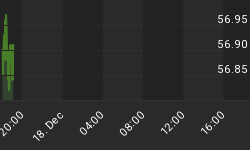March concluded the 72nd month of the advance out of the 2009 low. Given the duration of this advance, I feel that it is important for me to clarify for you why I maintain that this is the longest 4-year cycle advance in stock market history. Below, I have included a monthly chart of the Dow Jones Industrial Average going back to1896, which is the inception of the Industrials. Since 1896 there has been 28 completed 4-year cycles. We are now in the 29th. Of these 28 completed 4-year cycles, the average duration from low to low has been 47.07 months. Of these 28 completed cycles, 13 have been less than 47.07 months in total duration from low to low and 15 have been greater than 47.07 months.
During the advance in 2006 and into the 2007 top, some tried to argue that the modest decline into the 2006 low marked a 4-year cycle low. However, I said that this was not the case. I further explained that the 4-year cycle was not only extending, but that due to this extension it was only going to make matters worse once the 4-year cycle did peak and the inevitable decline into the 4-year cycle low began. More specifically, I said, in print and in numerous interviews, that the decline into the 4-year cycle low would carry price below the 2002 4-year cycle low, which it did. I was able to make this call based on statistical analysis of the 4-year cycle.
Part of that statistical based analysis is what I term my DNA Markers. These markers are nothing more than a set of statistical and technical based common denominators that have been seen at previous 4-year cycle tops. The very reason I developed these DNA Markers was so that I would have a concrete way of identifying cycle tops, in real time and in spite of their duration. Without a set of common denominators, there is simply no way to know when a cycle has in fact peaked. What if the cycle peaked early, as it did in 2000? How would one know? Fact is, without these DNA Markers, it is impossible to know until well after the fact and by then it's too late. For the record, yes, I also used these Markers to identify the 2000 top, which was documented, in print, in Technical Analysis of Stocks and Commodities Magazine.
Anyway, I said all that to say this, there are some who want to point toward the 2011 low as having marked the most recent 4-year cycle low. Because of my extensive research on cycles and the development of my statistical based DNA Markers and the complete absence of those markers at the May 2011 price high, I said then, in real time, that the May high was NOT the 4-year cycle top. In fact, because of the absence of these DNA Markers, I explained that it was only a decline into an intermediate-term cycle low and that once that low was made, we would see higher prices. To date, I maintain, based on these same statistical methods that the decline into the October 2011 low was without question not a 4-year cycle low. I also maintain, based on these statistical DNA Markers, this is the longest 4-year cycle extension since the inception of the Dow Jones Industrial Average in 1896. In addition, as was the case with the liquidity induced extension of the last 4-year cycle, which peaked in 2007, I further maintain that the current liquidity induced extension of the current cycle is likely to end with a severe bust. I am telling you that because of the efforts to prevent the natural ebb and flow of the cycle and the resulting extension, along with the fact that the masses do not understand the environment in which we operate, as is evident from the extreme bullish sentiment readings, this is the most dangerous stock market environment since the inception of the Industrials in 1896 and it is not going to end well. Anyone that is interested in the specifics, the research is available in the monthly research letters, Cycle News & Views, at cyclesman.com

















